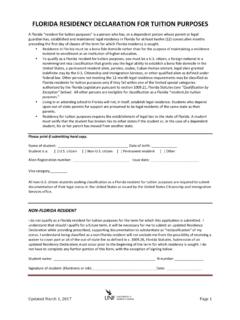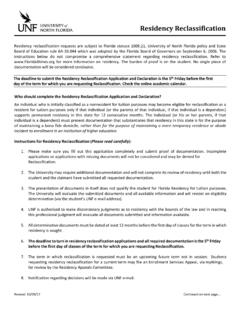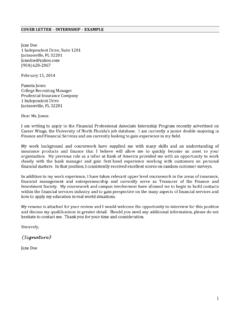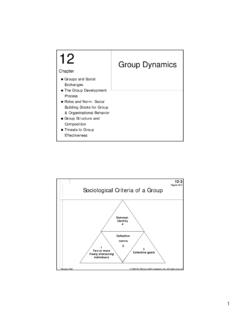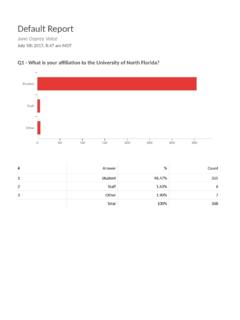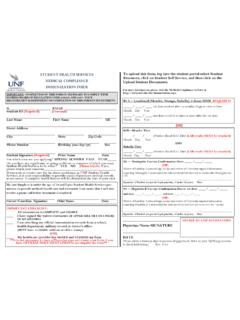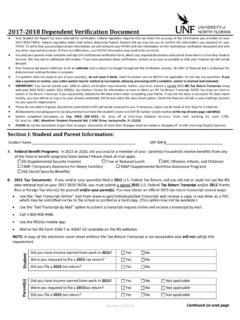Transcription of Linkage Isomers: Synthesis and Characterization of …
1 1 Linkage isomers : Synthesis and Characterization of [Co(NH3)5 ONO]Cl2 and [Co(NH3)5NO2]Cl2 Divalent cobalt is more stable than trivalent cobalt for simple salts of cobalt, with only a few salts of Co(III) known ( CoF3). Formation of a coordination complex stabilizes a higher oxidation state as evidenced by a number of octahedrally coordinated complexes. In this experiment, you will prepare[1, 2] two classical Linkage isomer compounds, [Co(NH3)5 ONO]Cl2 and [Co(NH3)5NO2]Cl2. 1) One Synthesis scheme of [Co(NH3)5Cl]Cl2 involves the following unbalanced equations: Co2+ + NH4+ + 1/2H2O2 [Co(NH3)5(OH2)]3+ [Co(NH3)5(OH2)]3+ + 3 HCl [Co(NH3)5Cl]Cl2(s) + H2O + 3H+ 2) Synthesis of [Co(NH3)5 ONO]Cl2 and [Co(NH3)5NO2]Cl2 involves the following: [Co(NH3)5Cl]2+ + H2O [Co(NH3)5H2O]3+ + Cl- [Co(NH3)5H2O]3+ + NO2- [Co(NH3)5 ONO]2+ + H2O [Co(NH3)5 ONO]2+ [Co(NH3)5NO2]2+ Synthesis and Experimental Procedure: All reactions should take place in a fume hood.
2 Part I may be skipped if sufficient [Co(NH3)5Cl]Cl2 is available from a previous experiment. Scale solvent and reagent amounts as needed. Part I: chloropentaamminecobalt(III) chloride, [Co(NH3)5Cl]Cl2 Prepare a solution of mol ammonium chloride NH4Cl in 30 mL of concentrated aqueous ammonia in a 250 mL Erlenmeyer flask. While stirring with magnetic stirbar, add mol of cobalt(II) chloride hexahydrate. While continuously stirring, slowly add 8 mL of a 30% H2O2 solution (CAUTION: H2O2 is a strong oxidizing agent that can cause severe burns. Use gloves! Wash affected areas immediately with water!). When evidence of further reaction has ceased, slowly add 30 mL of concentrated HCl.
3 Heat the solution using a hot plate. Maintain a temperature of about 85 C for about 20 minutes. Do not allow the solution to boil. Cool the solution slightly and then place in an ice water bath. Isolate the crystalline product by suction filtration. Wash the product with a small amount of ice-cold water. The total volume of the wash should not exceed 15 mL. Wash with 15 mL of cold 6M HCl. Dry in a drying oven for 10-20 minutes and then weigh the product to determine the percent yield. Allow the sample to continue to dry on the lab bench or in the drying oven before collecting an IR and UV-Vis spectra at the end of the laboratory session. Discard the filtrate wash solution in the appropriate chloropentaamminecobalt(III) chloride waste container in the fume hood.
4 Don t tightly cap the waste bottle. 2 Part II: pentaamminenitritocobalt(III) chloride, [Co(NH3)5 ONO]Cl2 Heat a solution (do not boil) of 8 mL of concentrated aqueous ammonia in 80 mL of water. While heating and stirring, add mol of dry [Co(NH3)5Cl]Cl2 or mol wet [Co(NH3)5Cl]Cl2. Continue heating, below boiling point, and stirring until the product dissolves. Add an additional small amount of 1:10 ammonia:water if needed. This may take 10-15 minutes. If you observe the presence of a dark brown to black precipitate of cobalt oxide, filter it off. Cool the solution, in an ice bath, to about 10 C. Add 2 M HCl slowly while keeping the solution cold until it is neutral as determined by litmus or pH paper.
5 Add g of sodium nitrite followed by 5 mL of 6 M HCl. Cool the solution in an ice bath for approximately an hour, then filter the precipitated orange-salmon pink crystals of [Co(NH3)5 ONO]Cl2. Wash with 20 mL of icewater then 20 mL of 95% ethanol. Allow it to dry on the lab bench for 10-15 minutes before collecting an IR spectrum and UV-Vis spectrum. Do not dry in a drying oven. Discard the waste in the appropriate waste container in the fume hood. The product [Co(NH3)5 ONO]Cl2 is not stable and will isomerize to [Co(NH3)5NO2]Cl2. Ensure you have sufficient time in the laboratory session to collect the IR spectrum of the product on the same day as the Synthesis . Pentaamminenitrocobalt(III) chloride, [Co(NH3)5NO2]Cl2 The product [Co(NH3)5 ONO]Cl2 will isomerize in the solid state to [Co(NH3)5NO2]Cl2, even at room temperature, given sufficient time.
6 [3] Dr. Fred Basolo, winner of the Priestley Medal (the highest honor conferred by the American Chemical Society), reported on the kinetics and mechanisms of these isomerism reactions in the first paper[4] published by the ACS journal Inorganic Chemistry. Collect IR spectra over at least two laboratory periods. Compare the data over time and show to the instructor. Ensure UV-visible and IR spectra have been collected for each of the three products, [Co(NH3)5Cl]Cl2, [Co(NH3)5 ONO]Cl2, and [Co(NH3)5NO2]Cl2. Retain your products in labeled sample bags. If instructed, the isomerization may also be facilitated by heating. It is possible to use the [Co(NH3)5 ONO]Cl2 product before it is completely dry.
7 Bring 20 mL of H2O to a boil and add a few drops of NH4OH. Turn off heat and allow cooling for 4 minutes after boiling has ceased. Add g of [Co(NH3)5 ONO]Cl2 to the solution. As this solution cools to room temperature, add 20 mL of concentrated HCl. After cooling from solution, [Co(NH3)5NO2]Cl2 will precipitate from solution. Filter the product from solution and wash with small portions of a total of 10 mL 95% ethanol. Allow to dry under vacuum for several minutes until dry and collect the IR spectrum and the UV-Vis spectrum. 3 References 1 Jolly, W. L. In The Synthesis and Characterization of inorganic compounds; Prentice-Hall, Inc.: 1970; 2 Tanaka, J.; Suib, S. L.
8 In Experimental methods in inorganic chemistry; Prentice-Hall, Inc.: 1999; 3 Penland, R. B.; Lane, T. J.; Quagliano, J. V. Infrared Absorption Spectra of Inorganic Coordination Complexes. VII. Structural Isomerism of Nitro- and Nitritopentamminecobalt(III) Chlorides. Journal of the American Chemical Society 1956, 78, 887-889 4 Basolo, F.; Hammaker, G. S. Synthesis and Isomerization of Nitritopentammine Complexes of Rhodium(III), Iridium(III), and Platinum(IV). Inorganic Chemistry 1962, 1, 1-5
